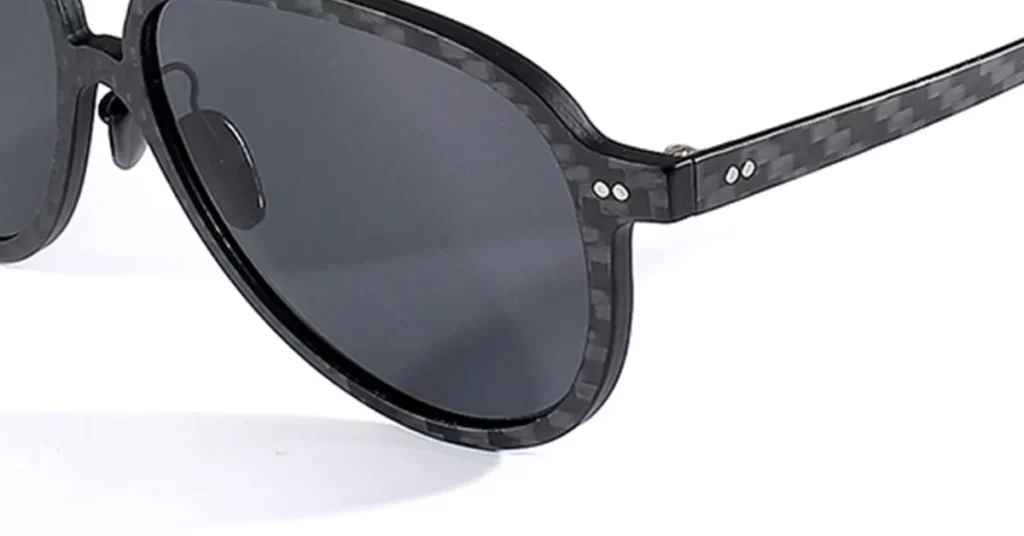Carbon fiber eyewear is exceptionally safe when produced to high-quality standards, offering superior durability and hypoallergenic properties. Safety is not determined by the material itself, but by the precision of the manufacturing process. A properly cured carbon fiber composite is a stable, non-reactive material ideal for daily wear and extended skin contact.
The Core Safety Question: Risks vs. Realities
The most important concept to grasp is that a proper manufacturing process creates a material that is not only safe but often superior to traditional frame materials in key safety areas. Let’s dismantle the common myths you’ve likely heard.
Myth vs. Fact: Addressing Top Safety Concerns
Your concerns about carbon fiber probably revolve around a few persistent misconceptions. Let’s address each one with the technical clarity you need to feel secure.
Concern 1: “It shatters into dangerous splinters.”
Carbon fiber is known for what engineers call a “catastrophic failure” mode. This means it cracks or fractures under a sharp impact instead of bending like metal. While that sounds alarming, the reality is far safer than you might think. When it fails, it creates clean fractures, not sharp, glass-like splinters. Think of it like a tree branch that snaps cleanly rather than shattering into a thousand tiny shards. This predictable failure mode is manageable and reduces the risk of lacerations.
Concern 2: “The materials cause skin irritation.”
High-quality carbon fiber frames are inherently hypoallergenic. The key is the final cured composite, which creates a stable, non-reactive surface that doesn’t contain common allergens like nickel. The medical industry’s use of carbon fiber in prosthetics and implants, which must meet rigid ISO 10993 biocompatibility standards, is a powerful testament to its skin-friendliness.
Most Importantly: The final cured product is chemically inert. This means it doesn’t release any substances that could trigger allergic reactions or skin sensitivities, making it a safe choice for even your most sensitive customers.
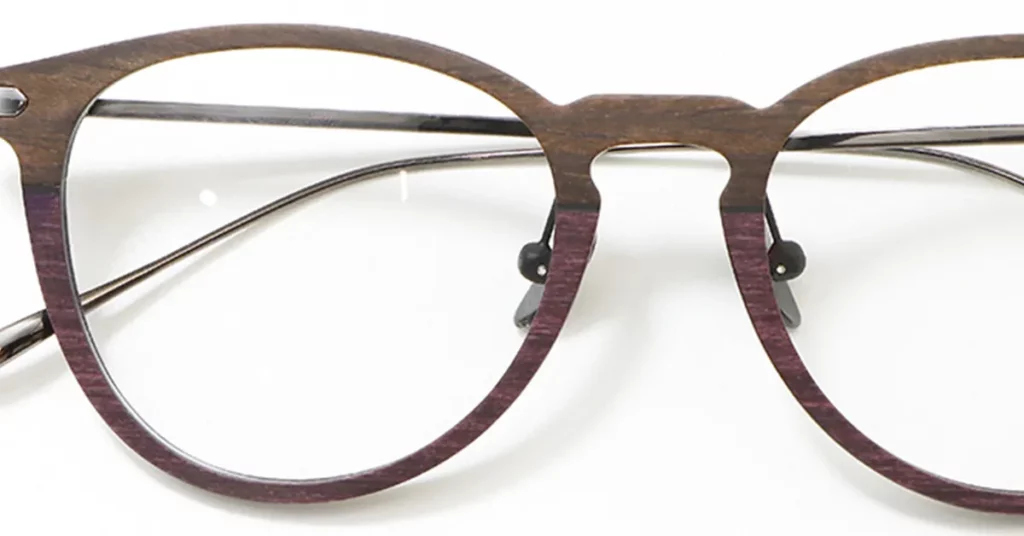
Concern 3: “It degrades in the sun and becomes brittle.”
This is only a real risk for poorly made frames. The epoxy resin that binds the fibers can be damaged by UV radiation, but all high-quality frames have a protective clear coat specifically designed to block UV rays. Professional-grade frames with an intact UV coating will show no structural weakness even after years of sun exposure.
Key Metric: A frame with a missing or compromised UV coat can become brittle in just 2-3 years of intense sun. A properly protected frame, however, will maintain its strength and integrity for over 15 years.
Concern 4: “It’s made with harmful chemicals.”
While the raw materials used in production require industrial handling, the final, cured composite is completely stable and inert. This process transforms the raw components into a new, non-reactive polymer structure. Simple Analogy: It’s similar to how many modern plastics are made from complex chemicals but become perfectly safe food containers or toys once fully processed.
Critical Warning: This safety guarantee only applies to products from reputable manufacturers. Cheap imitations may result from incomplete curing, which can leave reactive chemicals on the surface.
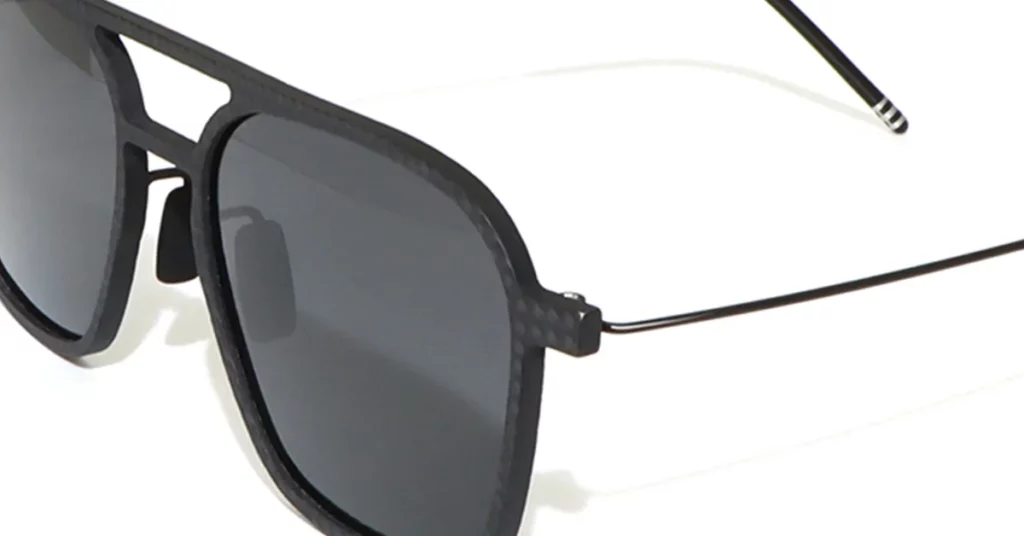
A Pro’s Perspective: Why Quality is Everything
You have to recognize that carbon fiber isn’t inherently dangerous or safe—its safety profile is engineered into the product through the manufacturing process. This is the deciding factor between a premium product and a potential liability.
Not All “Carbon Fiber” Is Equal
The market is flooded with everything from aerospace-grade composites to cheap plastic frames with a “carbon look” sticker. These imitations offer none of the structural or safety benefits. Real carbon fiber requires sophisticated equipment and controlled environments.
Pro Tip: An unusually low price is the biggest red flag. The complexity and cost of proper manufacturing mean that a cheap carbon fiber frame has almost certainly involved compromises in quality and safety.
The Role of Resin and Protective Coatings
The resin matrix is the foundation that holds the fibers together and shields them from damage. High-grade epoxy resins create a strong, stable bond that resists moisture and chemicals. The protective clear coat is the first line of defense against UV radiation, acting like a permanent sunscreen for the frame’s structure.
Best Practice: Always ask a potential manufacturing partner about their specific resin systems and UV protection protocols. A serious partner will provide detailed technical data on both.
The Takeaway: Safety is Built in the Factory
This is the single most critical concept you can learn. The properties that make carbon fiber so desirable—its strength, lightness, and resilience—only exist because of a precise and controlled manufacturing process. Shortcuts in production directly compromise both performance and safety.
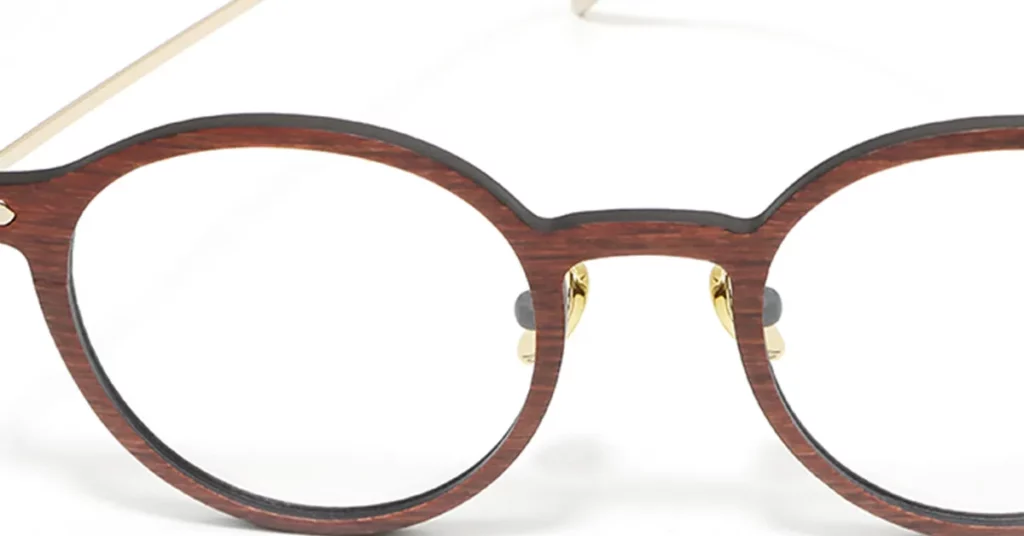
Carbon Fiber 101: Deconstructing the Material
Before you can evaluate safety, you need a clear picture of what carbon fiber actually is. It’s not a single substance, but a sophisticated composite material.
What Is “Carbon Fiber” in Eyewear?
In eyewear, “carbon fiber” is the common name for Carbon Fiber Reinforced Polymer (CFRP). This material is a composite, meaning it’s made of two main parts: the reinforcement (incredibly strong carbon filaments) and a matrix (a polymer resin, usually epoxy). The fibers provide the strength, while the resin holds them in place, distributes stress, and gives the frame its shape.
Definition: Each carbon filament is only 5-10 micrometers thick—about ten times thinner than a human hair. Thousands of these filaments are bundled into a “tow,” which is the basic building block for making a frame.
Key Terminology to Know
When speaking with manufacturers, knowing a few key terms is essential for clear communication.
- Tow: A bundle of carbon filaments. A “3K” tow means it contains 3,000 filaments.
- Pre-preg: This is a sheet of carbon fiber fabric that arrives “pre-impregnated” with resin. It ensures a consistent and high-quality resin distribution.
- CFRP: This stands for Carbon Fiber Reinforced Polymer and is the correct technical term for the final composite material used in frames.
Anatomy of a Frame: Full vs. Hybrid
Modern eyewear uses carbon fiber in several ways to maximize its benefits.
- Full Carbon Fiber: The entire frame—front and temples—is made from CFRP. This creates the absolute lightest and strongest product.
- Hybrid Designs: These frames combine carbon fiber temples with an acetate or metal front. This offers the weight savings of carbon fiber on the temples while allowing the adjustability of other materials on the frame front.
- Inlays: Some designs use small pieces of carbon fiber as a decorative inlay within a frame made of another material. This is purely for aesthetic appeal and offers no structural benefit.
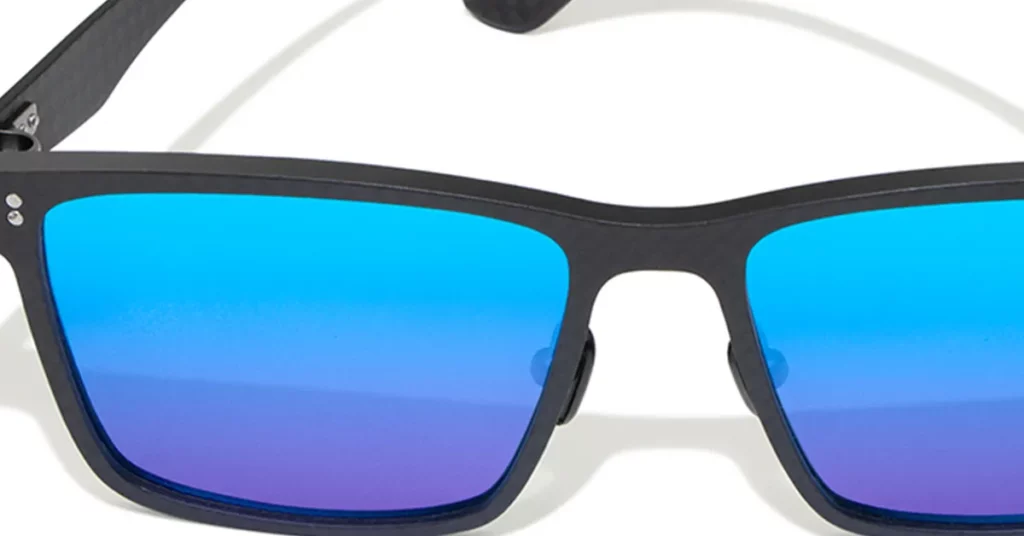
A Visual Guide: Types of Carbon Fiber
The visual pattern of a carbon fiber frame tells you about its construction and performance. Learning to spot the differences is a mark of a true professional.
Woven Carbon Fiber (Twill/Plain Weave)
This is the classic look most people recognize, featuring a checkerboard or diagonal pattern. A woven fabric offers excellent strength in multiple directions, making it ideal for the complex loads an eyeglass frame endures. The tight, regular pattern is a good indicator of precise manufacturing.
Forged Carbon Fiber (Chopped Fiber)
Instead of a woven pattern, forged carbon fiber has a unique, marbled look. It’s made by compressing chopped carbon fibers mixed with resin into a mold. This process allows for more complex 3D shapes but generally has slightly lower strength than oriented woven fiber—a perfectly acceptable trade-off for most eyewear designs.
Construction Types: Full Frame vs. Hybrid
The construction method dramatically affects performance, fit, and safety. Understanding these differences is key to choosing the right product for your brand.
| Feature | Full Carbon Fiber Frame | Hybrid Frame (Carbon Temples) | “Carbon Wrapped” Imitator |
| Material | 100% Structural CFRP | Acetate/Metal Front, CFRP Temples | Plastic/Metal with a Film |
| Weight | Ultimate Lightness | Very Lightweight | Standard Weight |
| Strength | Highest Strength & Rigidity | High Temple Strength | No Structural Benefit |
| Adjustability | Not Adjustable (Permanent Fit) | Frame Front is Fully Adjustable | Frame Front is Adjustable |
| Authenticity | Premium, Engineered Product | Optimized, Performance-Driven | Deceptive, Low-Quality |
The Bottom Line: Full carbon and hybrid frames are both legitimate, high-performance options that leverage the material’s real benefits. “Carbon wrapped” frames, however, are purely cosmetic and should be avoided.
Common Mistake: Never assume a frame with a carbon fiber pattern offers carbon fiber performance. You must always verify that the material is structural CFRP, not just a decorative film applied over a basic plastic frame.
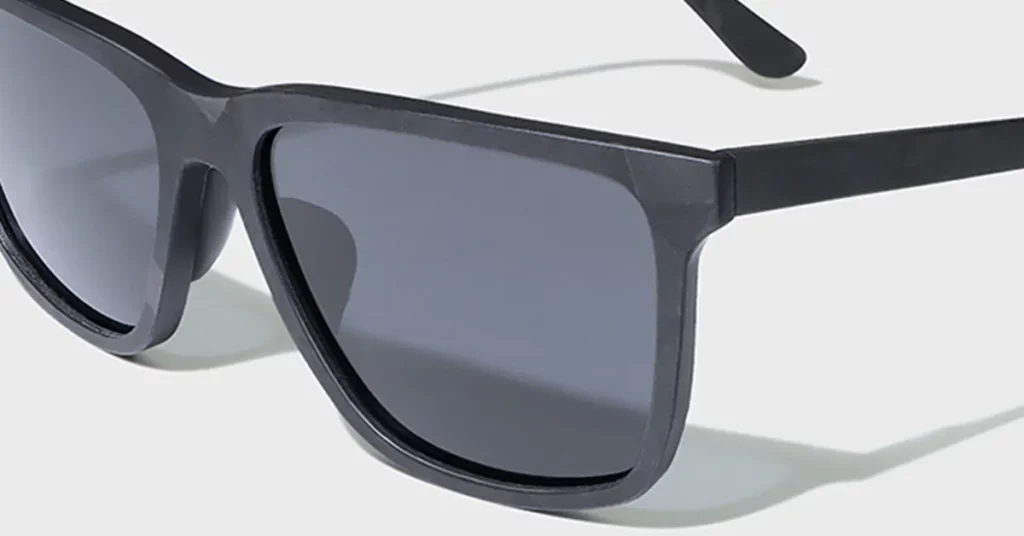
How Safety Is Engineered in Manufacturing
The safety of your frames is decided on the factory floor. A deep understanding of this process helps you vet suppliers and demand a product that is truly safe.
The Method Matters More Than the Material
Even the best raw materials are useless without a precise manufacturing process. Process control is what ensures consistent quality and eliminates defects that can lead to premature failure or safety issues.
For Example: The molding and curing phase is a high-risk area. If not done under pressure, tiny air bubbles called voids can get trapped in the resin. These voids are invisible weak points that can cause the frame to crack under stress.
Remember This: Quality manufacturing uses automated, high-pressure curing in an autoclave or heated press. This squeezes out any air bubbles before the resin hardens, resulting in a solid, reliable, and much safer frame.
From Sheet to Frame: A Safety Walkthrough
- Stage 1: Layup Design. Sheets of carbon fiber are layered in specific orientations. This engineered layup is designed to handle the specific stresses a frame will experience, maximizing strength where it’s needed most.
- Stage 2: Curing Under Pressure. The layup is placed in a mold and heated under intense pressure. This crucial step activates the resin, transforms the flexible sheets into a rigid structure, and eliminates dangerous voids.
- Stage 3: Precision CNC Machining. The cured frame is cut and finished using computer-controlled machines. CNC machining ensures every edge is smooth and every dimension is perfect, which is critical for both safety and proper lens fitting.
- Stage 4: Application of Protective Coating. A specialized clear coat is applied as the final step. This coating is the frame’s only defense against UV degradation and is essential for its long-term safety and durability.
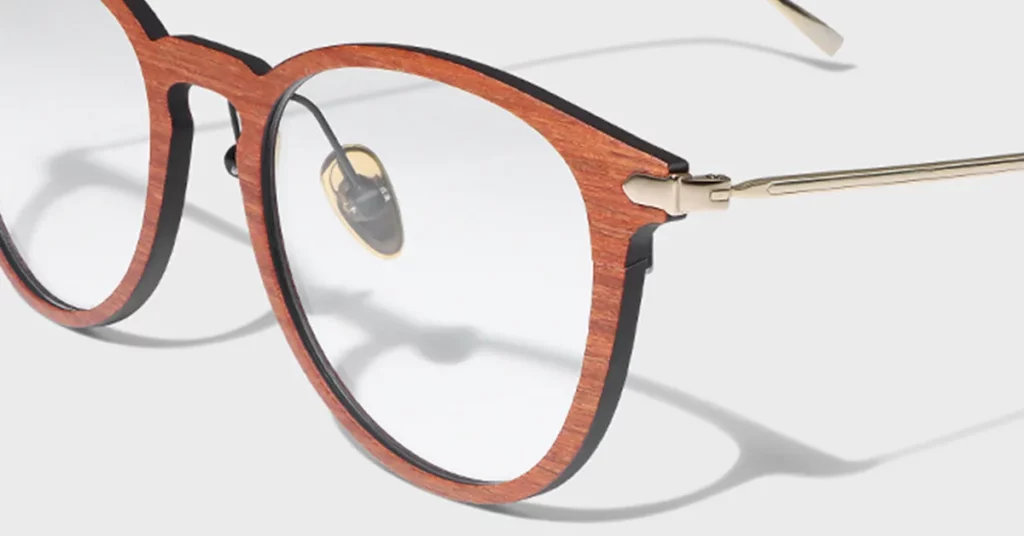
The KSSMI Protocol: Your Quality Assurance Checklist
When evaluating a manufacturer, you need to ask specific, technical questions. This checklist provides the framework for a professional sourcing conversation.
Foundational Material & Supplier Validation
The process starts with ensuring your partner uses high-quality, traceable raw materials.
- Checklist Item: Request documentation for the specific resin system used, including its biocompatibility data (e.g., ISO 10993). A serious manufacturer will have this readily available.
- Checklist Item: Verify the origin and grade of the raw carbon fiber tow. Knowing the source of the fiber ensures material consistency and performance.
- Checklist Item: Inquire about the application process and testing data for the UV protective clear coat. This is one of the most common points of failure in low-quality frames.
Critical Warning: A supplier who is unable or unwilling to provide this basic material documentation is a major red flag. It likely means they are using substandard materials or have no quality control.
Key Manufacturing & QC Tests
Comprehensive testing is what separates professional operations from corner-cutting factories.
- Test 1: Void Detection. Ask if they use non-destructive testing, like ultrasonic inspection, to scan for internal voids or delamination that aren’t visible to the naked eye.
- Test 2: Dimensional Accuracy. High-end factories use a Coordinate Measuring Machine (CMM) to verify that the physical dimensions of the finished frame perfectly match the design specifications.
- Test 3: Hinge Point Stress Test. Quality manufacturers cycle-test their hinges thousands of times to ensure they won’t loosen or fail over the product’s lifetime.
Impact & Failure Mode Testing
You need to know how a frame will fail if the worst happens.
- Checklist Item: Request data from impact tests, like the FDA standard drop-ball test, to understand how the frame withstands impact.
- Checklist Item: Ask for videos or photos of destructive testing. Seeing how the frame breaks (a clean fracture vs. splintering) gives you immense confidence in its safety.
Pro Tip: A trustworthy partner is never afraid to show you how their product fails, because they have engineered it to fail as safely as possible.
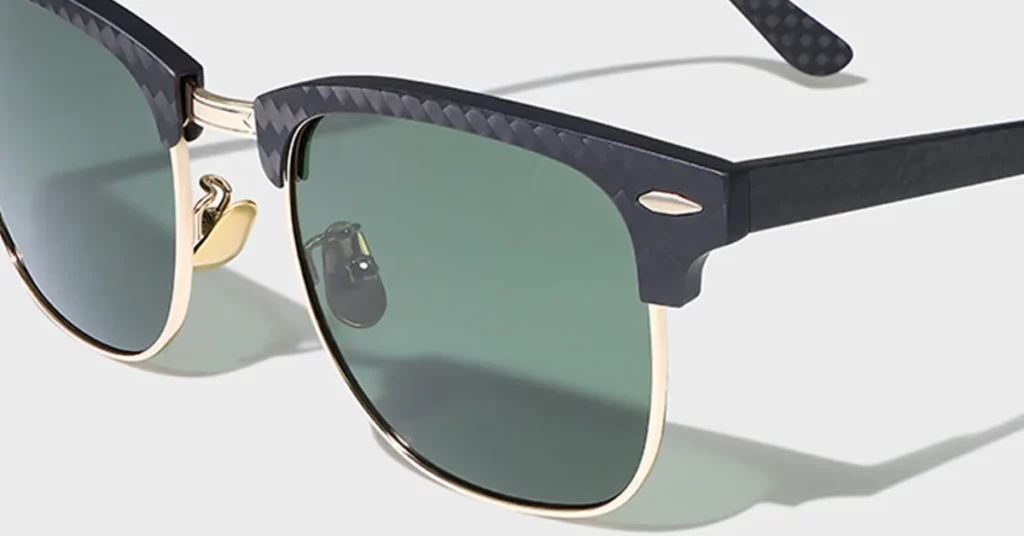
Real-World Reliability: Care & Spotting Fakes
Once you have a quality product, teaching your customers proper care is essential. So is knowing how to spot the low-quality fakes that can damage your brand’s reputation.
How to Care for Carbon Fiber Eyewear
- Clean with Mild Soap and Water Only. Harsh chemicals or solvents can damage the protective UV coating. Use a soft cloth to avoid scratches.
- Avoid Prolonged Storage in Intense Sunlight. While protected, it’s always a best practice to avoid leaving frames on a car dashboard or in other high-heat, high-UV environments.
- Always Use a Hard Case. Carbon fiber is incredibly strong, but it can crack from a sharp, crushing force. A hard case is the best protection during travel and storage.
Red Flags: How to Spot a Fake
- The Flat, “Sticker” Pattern. Authentic carbon fiber has a visible depth and shimmer as you tilt it in the light. A fake pattern looks flat and lifeless, like a printed image.
- An Unusually Low Price. The real manufacturing process is complex and costly. An extreme bargain is almost certainly not real carbon fiber.
- A Flimsy or Unusually Heavy Feel. Real carbon fiber has a unique feel: incredibly light yet exceptionally rigid. A frame that feels heavy or overly flexible is likely a fake.
Conclusion
Carbon fiber is one of the safest and highest-performing materials you can use for eyewear, but only when it is produced under stringent quality controls. The real risk is not in the material itself, but in sourcing from unvetted manufacturers who cut corners on processes and materials. Armed with this guide, you can now ask the right questions, demand the right proof, and embrace innovation with confidence, positioning your brand as a leader in both technology and customer safety.
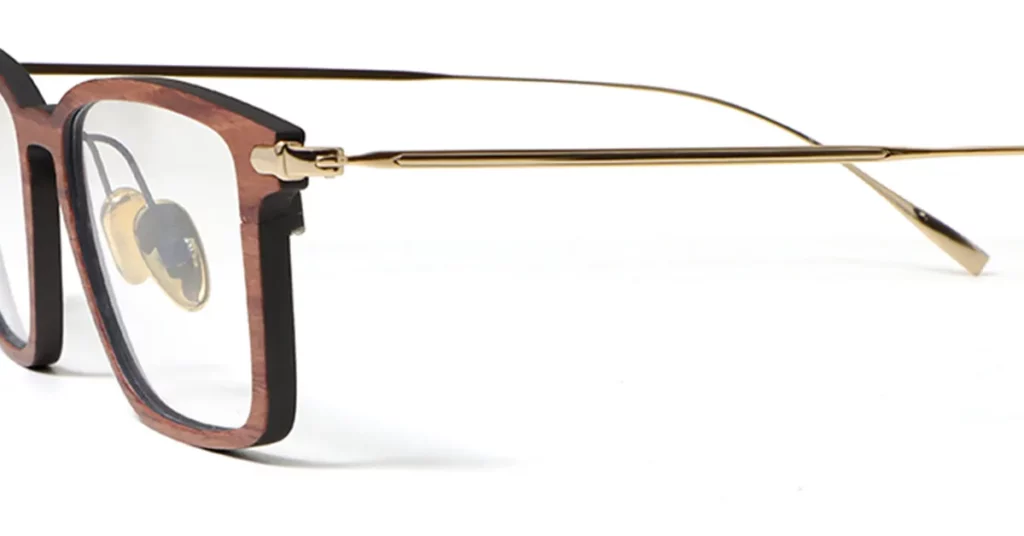
Frequently Asked Questions
1. Can carbon fiber frames cause skin allergies?
No, high-quality carbon fiber eyewear is hypoallergenic. It uses biocompatible resins and coatings that are non-reactive. The risk of allergies only exists with low-quality products made with improper chemicals.
2. What happens if I drop my carbon fiber glasses? Will they shatter?
A simple drop is very unlikely to cause damage. A sharp, direct impact could cause a crack, but they do not “shatter” into sharp fragments like glass. They are designed to fracture cleanly.
3. Why can’t an optician adjust my carbon fiber glasses?
The material’s extreme rigidity means it cannot be heat-molded or bent like acetate or metal. The fit is permanent, which is why choosing a frame that fits well from the start is so important.
4. What’s the safety difference between real carbon fiber and a “carbon look” frame?
Real carbon fiber’s safety comes from its engineered strength and impact resistance. A “carbon look” frame is just plastic with a printed pattern, offering none of the material’s genuine safety features.
5. Does the safety of carbon fiber frames degrade over time?
A quality frame with a proper UV-protective coating will not degrade for many years. Low-quality frames that lack this critical coating can become brittle and unsafe from sun exposure over time.

